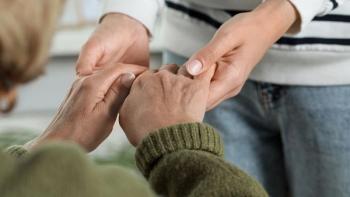
Acupuncture May Reduce Pain Levels in Patients with Breast Cancer
Twelve weeks of acupuncture treatment in certain patients with early-stage breast cancer resulted in a long-term reduction of pain levels.
Women with early-stage breast cancer who experienced joint pain because of treatment with aromatase inhibitors achieved reductions in pain levels after 12 weeks of acupuncture therapy, compared to those who did not receive true acupuncture, according to recent data.
The results, which were presented at the recent 2021 American Society of Clinical Oncology (ASCO) Annual Meeting, also demonstrated that the benefit of acupuncture was sustained for up to one year.
Treatment with aromatase inhibitors is often associated with an increased risk for musculoskeletal symptoms, such as pain, weakness, stiffness and decreased range of motion. It was previously reported that at 24 weeks, patients receiving true acupuncture achieved better pain relief when compared to patients receiving sham acupuncture (acupuncture where needles don’t go as deep and are not used in the same points of the body) or those who were wait-listed. The study authors reported the 52-week follow-up data at the ASCO Annual Meeting.
The study comprised 226 patients (median age, 60.7 years) who received aromatase inhibitors for at least 30 days and reported a pain score of at least three out of 10, using the Brief Pain Inventory-Worst Pain index.
Pateints received either true acupuncture twice a week for six weeks (110 patients), sham acupuncture twice a week for six weeks (59 patients) or were placed on a waitlist (57 patients). At 52 weeks, the study authors were able to evaluate 91 patients receiving true acupuncture, 53 receiving sham acupuncture and 47 placed on the waitlist.
Scores at 52 weeks in the true acupuncture group were 1.08 points lower than the sham acupuncture (meaning there was less pain) group, and 0.99 points lower than the group placed on a waitlist.
There were 64% of patients in the true acupuncture group, 45% in the sham acupuncture group and 53% on a waitlist who experienced a clinically meaningly benefit in score decrease.
At 12 and 24 weeks there was no statistically significant difference between those who received true acupuncture and those who received sham acupuncture. However, there was a statistically significant difference between the two groups 52 weeks after all the groups received true acupuncture.
“This effect was durable through one year despite completion of protocol acupuncture at 12 weeks, and the offering of acupuncture to all participants at 24 weeks,” said Dr. Dawn Hershman, director of breast oncology at Herbert Irving Comprehensive Cancer Center at Columbia University in New York, in a presentation of the findings.
For more news on cancer updates, research and education, don’t forget to




